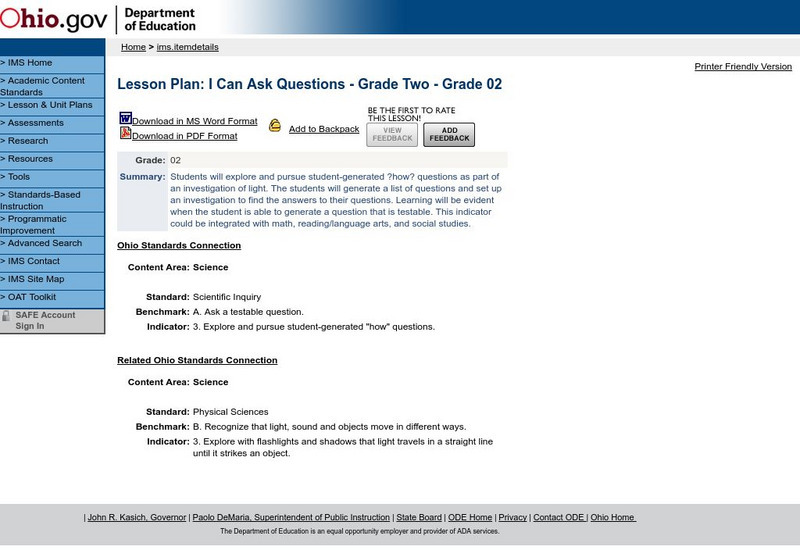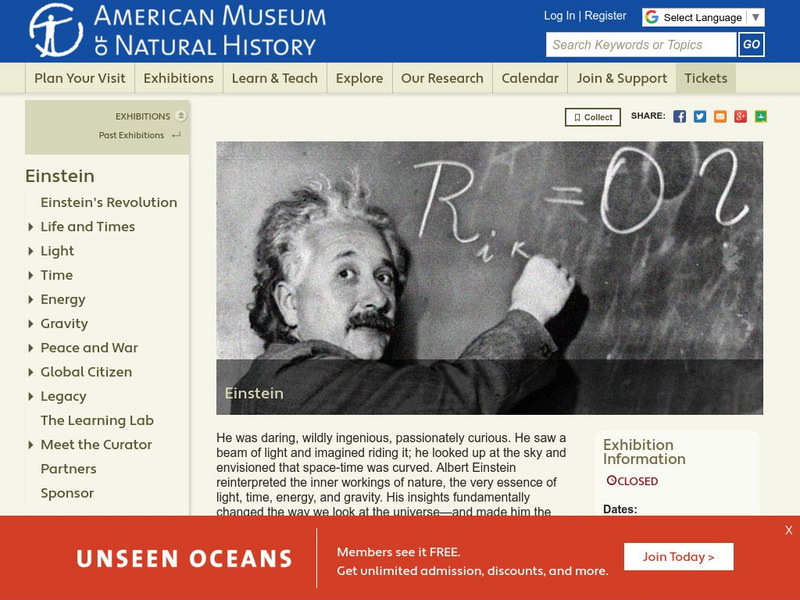Hi, what do you want to do?
Curated OER
What Does Motion Have to do with Sound?
Second graders investigate and explore sound energy. They investigate how the vibrational motion moves through matter in waves. Students describe sounds and vibrations. They observe that vibrational motion creates sounds. Students record...
Curated OER
Observing Brine Shrimp
Learners observe brine shrimp eggs, create an appropriate environment for their survival, and observe their growth.
Curated OER
Heat and Color
Sixth graders conduct a simple experiment to explore the ways that color can affect heat transfer. They review the three ways that heat can transfer: conduction, convection and radiation.
Curated OER
What's the Big Deal?
Students explore and define methane hydrates and describe ways that it can impact their own lives. In this methane hydrate lesson students create a molecular model and research methane hydrate.
Curated OER
The Undiscovered Planet
Students find a planetary object using star fields. In this investigative lesson students determine the distance to an object using trigonometric parallax.
Curated OER
North American Explorers
Sixth graders discuss famous explorere then research an explorer, collect reference materials and take notes using notecards. They write a three to four page typed and double spaced report then present their findings to the class.
Curated OER
Testing Termites to Discover
Middle schoolers design an experiment to discover how termites respond to their environment.
Other
Ohio Dept. Of Education: Lesson Plan: I Can Ask Questions Grade Two
Students will explore sources of light in this lesson and generate their own questions for further investigation, then find answers.
Texas Instruments
Texas Instruments: Holt Physics: Brightness of Light
This probeware version of the Skills Practice Lab Brightness of Light from the chapter Light and Reflection uses a light probe to measure the intensity of light at different distances from a light source.
Libre Text
Libre Texts: Physics: The Ray Model of Light
How is light visible? Examine this source to understand what light is and how it travels. Answer discussion questions and practice problems to better recognize light rays and know their functions.
PBS
Pbs Learning Media: Explore How Light Is Needed to See Things: Interactive Lesson
Explore how light moves and describe how an object in a dark space only becomes visible when light moves into the space and illuminates it. Interactive activities, time-lapse videos, and images are used to enhance student observations as...
Physics Aviary
Physics Aviary: Solar System Energy Lab
This lab is designed to have students investigate the relationship between the distance you are from a source of light and the intensity of the light your receive.
TeachEngineering
Teach Engineering: Measuring Light Pollution
Students are introduced to the concept of light pollution by investigating the nature, sources and levels of light in their classroom environment. They learn about the adverse effects of artificial light and the resulting consequences on...
PBS
Pbs Learning Media: Let's Explore Light: Lesson Plan
Students will use observations and evidence to describe that objects can only be seen if they are illuminated by an external light source or give off their own light. Media is used to supplement student observations and encourage...
American Museum of Natural History
American Museum of Natural History: Einstein
This resource is a companion site of a retrospective exhibition held at the American Museum of Natural History in 2002-03, Einstein covers the life and scientific theories of this revolutionary scientist. Includes numerous primary source...
Museum of Science
The Atoms Family
Let this classic family of monsters guide you as you learn about energy. Interactive exercises, experiments, and demonstrations help to build knowledge and raise questions.
Alabama Learning Exchange
Alex: Save a Buck Challenge
Our pipes leak, air drafts push through our windows and walls, light bulbs create more heat than light, and every appliance we have stays plugged in all day long. Of course its our parents who pay the bills, so it doesn't matter. This is...
Curated OER
Etc: Maps Etc: Mean Average Temperatures in North America, 1906
A map from 1906 of North America showing the mean annual isotherms of the region given in degrees Fahrenheit. "The climate of North America naturally varies greatly, depending on latitude, the general atmospheric circulation or direction...


















